Recent Articles
Popular Makes
Body Types
2019 Ford Ranger Road Test and Review
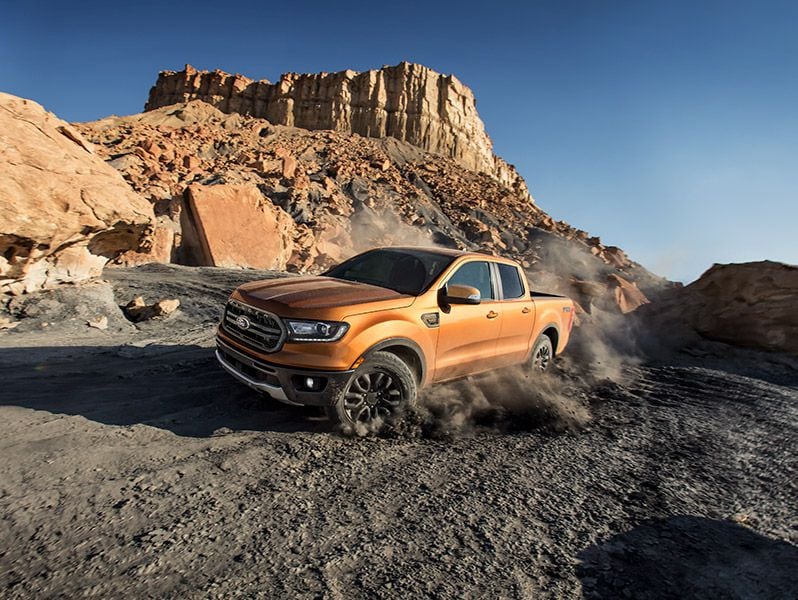
2019 Ford Ranger hero ・ Photo by Ford
Mid-size pickups are hot this year, and Ford has chosen this moment to bring its popular Ranger model back after an eight-year hiatus. The new Ranger is all-American, built in Wayne, Michigan. Perhaps best of all, the 2019 Ranger is priced to offer affordable access to the important features that mid-size truck buyers need.
The 2019 Ranger enters a small but potent market segment. The 2019 Toyota Tacoma is the defending champion in this arena, but the Chevrolet Colorado has made a strong showing, especially with its tough ZR2 and Bison off-road special editions. The GMC Canyon is also a contender with its available turbodiesel engine. The Nissan Frontier leads in affordability, although it’s showing its age. Buyers looking for a non-traditional alternative truck may prefer the Honda Ridgeline. Finally, Jeep is entering the fray with the dramatic Gladiator pickup, based on the legendary Wrangler off-road vehicle. Let's go over how Ford plans to take on the world and win.
Two Cabs and Three Trim Levels
The new Ranger comes in a simple product line with two body styles and three trim levels. Buyers can choose from an extended SuperCab with a very small back seat area or the five-passenger, four-door SuperCrew. SuperCab trucks come with a 6-foot bed, while the SuperCrew models offer a 5-foot bed.
Both body styles are offered in three trim levels: XL, XLT, and Lariat. All trims may be ordered with 4X2 rear-wheel-drive or a dual-range 4X4 system. Pricing starts at $25,395 for the XL 4X2 SuperCab, including all fees. The XLT starts at $29,035, and the Lariat starts at $33,305. Upgrading to 4X4 costs about $4,000 at any trim level, and the SuperCrew design adds about $2,000 to the corresponding SuperCab.
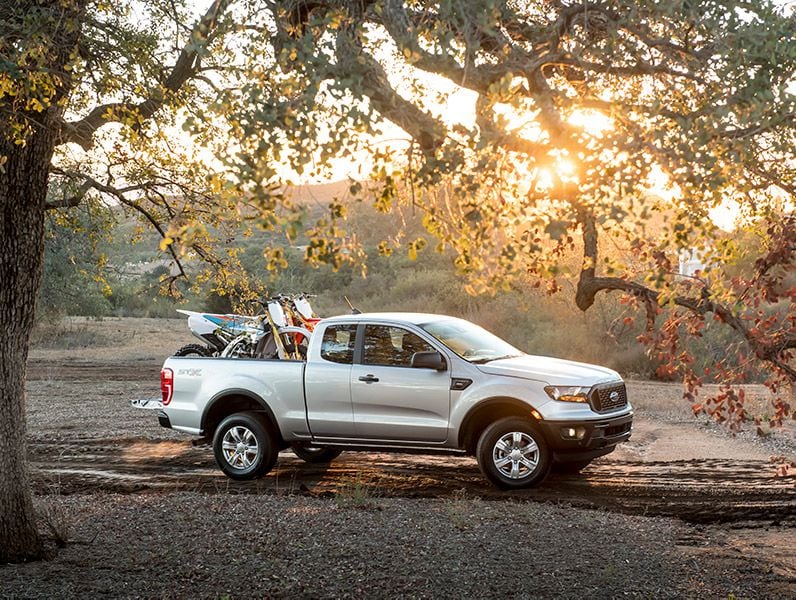
Photo by Ford
An Impressive 2.3-liter EcoBoost Engine
There is only one engine offered on the entire Ranger line: an EcoBoost 2.3-liter turbocharged four-cylinder that makes 270 horsepower and 310 pound-feet of torque. But before you get discouraged, remember that this is about the same usable power that you get out of the V6 engines in any of the competing trucks, and it’s a lot more than you get out of the four-cylinder options from any other manufacturer. Only the GM turbodiesel offers more torque than the EcoBoost.
The benefit of the EcoBoost engine really shows up in the fuel economy ratings. According to EPA estimates, 4X2 Rangers will return 21 mpg in the city and 26 mpg on the highway, with 23 mpg in combined driving. 4X4 Rangers will achieve 20 mpg city and 24 mpg highway, with a combined rating of 22 mpg. In our real-world driving test, a 4X2 Ranger easily achieved 28 mpg on the highway and about 20 mpg in city driving.
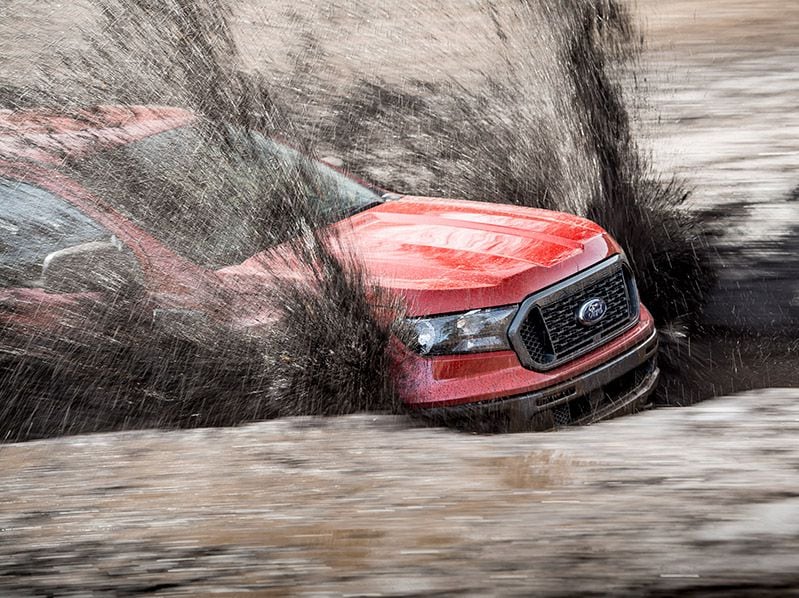
Photo by Ford
Modern 10-Speed Automatic Transmission and 4X4 System
One thing that helps the four-cylinder in the Ranger work like a V6 is the standard 10-speed automatic transmission. This gearbox is the same one being used in the Mustang, and it keeps the EcoBoost engine right in its sweet spot. The transmission is the same whether you choose the 4X2 or 4X4 Ranger. An electronic locking differential is available as a standalone option on any Ranger, and it’s included in the FX4 Off Road package.
The most notable thing about the transmission is that the Ranger is not subject to the “gear hunting” behavior that plagues so many vehicles. The Ranger does a good job of being in the correct gear for current conditions. The 10-speed shifts smoothly and does its job without drama, and Ford’s 4X4 system is equally refined. The system is controlled with a dial on the center console and allows you to select 2H or 4H on the fly, or 4L with the transmission shifted into Park. Note that 4X4 Rangers can be flat-towed behind an RV when the transfer case is in Neutral.
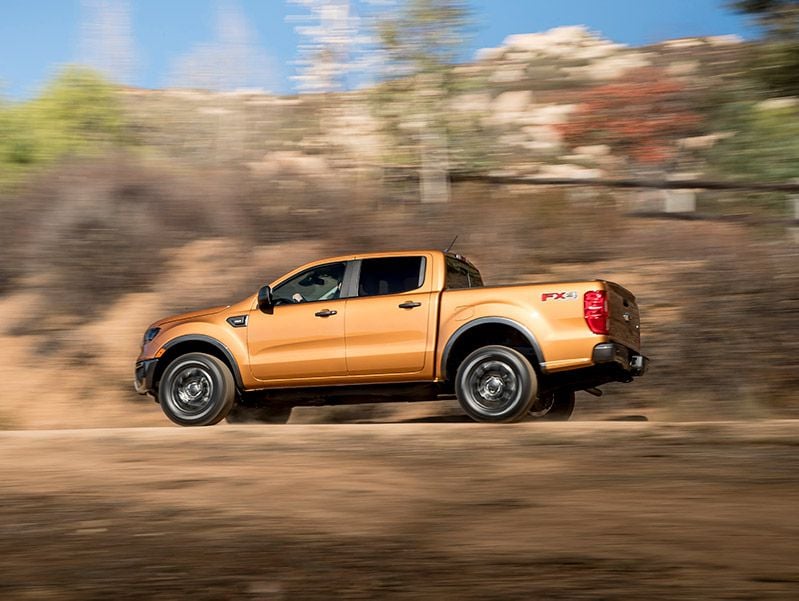
Photo by Ford
Upgraded Frame and Chassis
The Ranger sits on a new frame. It's related to the one used in the Ranger worldwide, but upgraded for the American market with additional boxing and bracing to increase towing capacity and payload. Like most modern trucks, the Ranger offers independent coil spring front suspension and a traditional solid rear axle with leaf springs in the rear. As a lightweight truck, the Ranger can be a little bouncy when it’s unloaded, but it has excellent manners with a load in the bed.
All Ranger models offer four-wheel disc brakes, and these are sized to stop the truck with a full payload. You need to be gentle with the brakes when running unloaded, but they’re completely capable when loaded or pulling a trailer. That’s expected and proper for a working pickup truck.
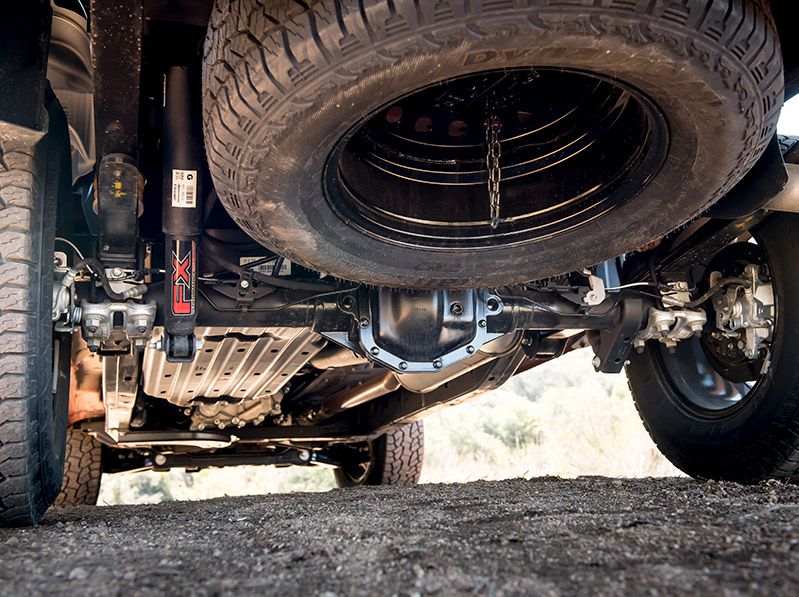
Photo by Ford
Best-in-Class Payload and Competitive Towing Capacity
The new Ranger offers a best-in-class payload rating of 1,860 pounds in the 4X2 SuperCab configuration. Payload drops a little to 1,770 pounds with the 5-foot bed on the SuperCrew, and to 1,650 with the SuperCab 4X4. Naturally, the 4X4 SuperCrew has the lowest payload rating at 1,560 pounds.
However, all Ranger models have an excellent tow rating of 7,500 pounds, and the stability control system includes trailer sway control. The optional trailer towing package comes with a Class IV hitch receiver and both seven-pin and four-pin wiring harness plugs. Rangers without the towing package still have a provision for a tow ball on the rear bumper and a four-pin plug. At $495, the towing package is a smart investment for any Ranger.
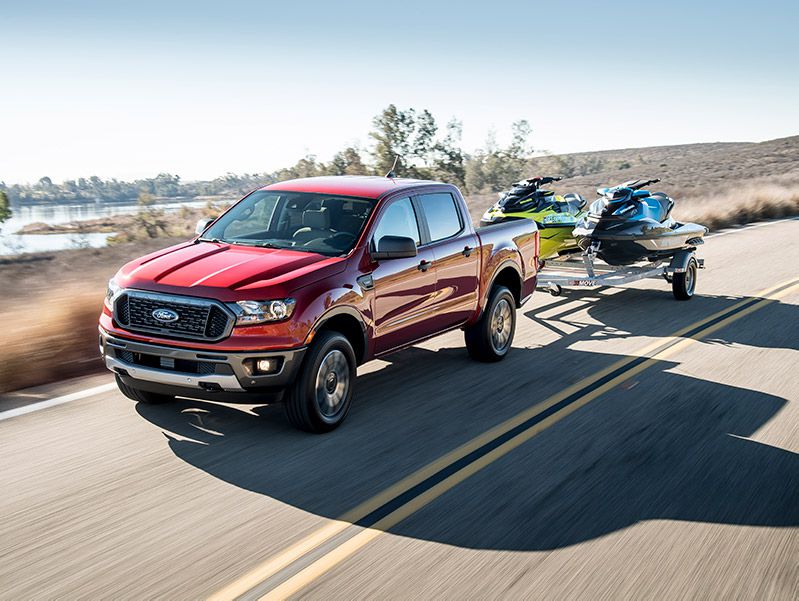
Photo by Ford
Ranger on the Road
The new Ranger has advanced stability and traction controls, but it’s still a light truck. Those who have enjoyed small pickups in the past will find the Ranger familiar and pleasant to drive. The ride can be a little bit bouncy when the truck is unloaded, but when there’s some weight in the bed the Ranger has excellent manners. The most notable thing about driving the Ranger on-road is that the 2.3-liter engine and 10-speed transmission combine to give this truck plenty of power to pull out and pass, accelerate onto a freeway, or to climb any hill.
One more thing to note: The Ranger has an exceptionally quiet cabin for a small truck. Even on rough roads, you can hold a conversation at a normal tone of voice, and the fatigue that comes with a noisy cabin won't be a problem.
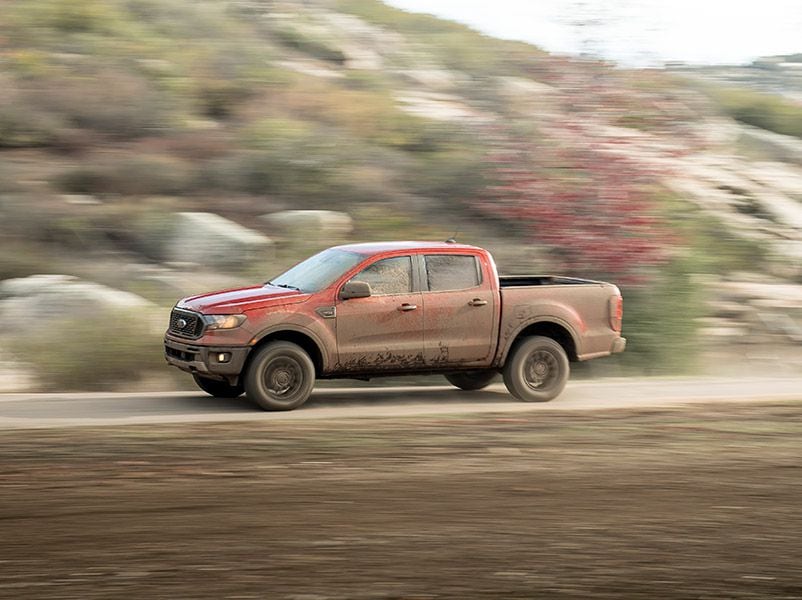
Photo by Ford
Ranger Off Road
If you buy the Ranger 4X4, you’re getting a capable off-road vehicle. But if you plan to do any serious off-road driving, you’ll want to specify the FX4 off-road option package. This is the most substantive option available on the new Ranger because it includes upgraded suspension and skid plates, an electronic locking differential, and Ford’s terrain management system with trail control.
Trail control works like cruise control, except it’s for climbing up and down rough terrain. When the Ranger is in 4X4 mode, you just press the Trail Control button and use the speed setting buttons on the steering wheel to set the speed you want to go. Trail Control works up to 20 mph in high-range 4X4 mode, and up to 5 mph in low-range.
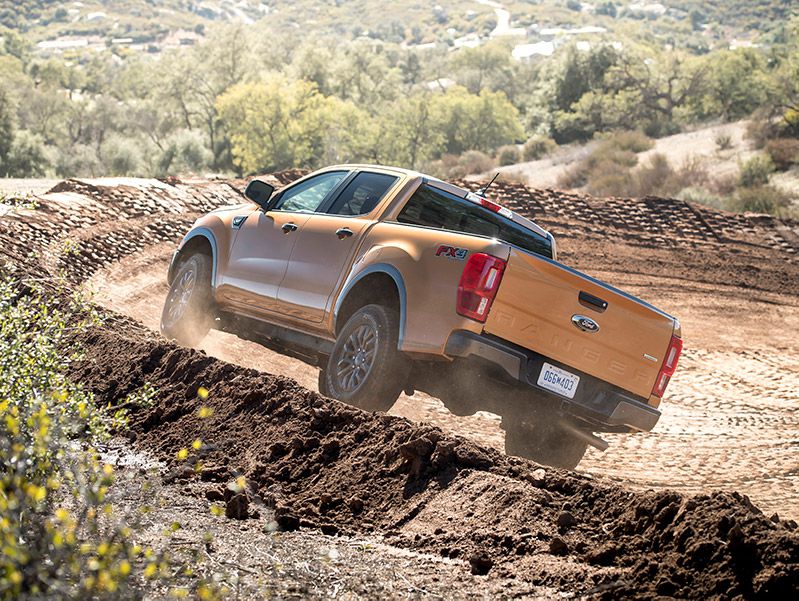
Photo by Ford
Simple Interior Options
Inside, the Ford Ranger is all business. If you select the XL trim, you can specify cloth upholstery or vinyl, and you get vinyl floor mats instead of carpet. That’s a nice feature on a working truck. The Ranger XLT comes with upgraded cloth upholstery, and the Lariat trim comes with durable leather. The rest of the interior trim is sturdy rather than luxurious, which is fine for a traditional pickup truck.
The back seats use the same upholstery as the front seats at every trim level, but what you need to know is that the SuperCab has extremely small bucket seats in the back. Its rear seats are suitable for small children, but not adults. The SuperCrew design has a larger bench seat in the back, but it’s still pretty tight for adults. If you plan to haul people in the back seat of your truck frequently or for long distances, you might want to consider moving up to an F-150.
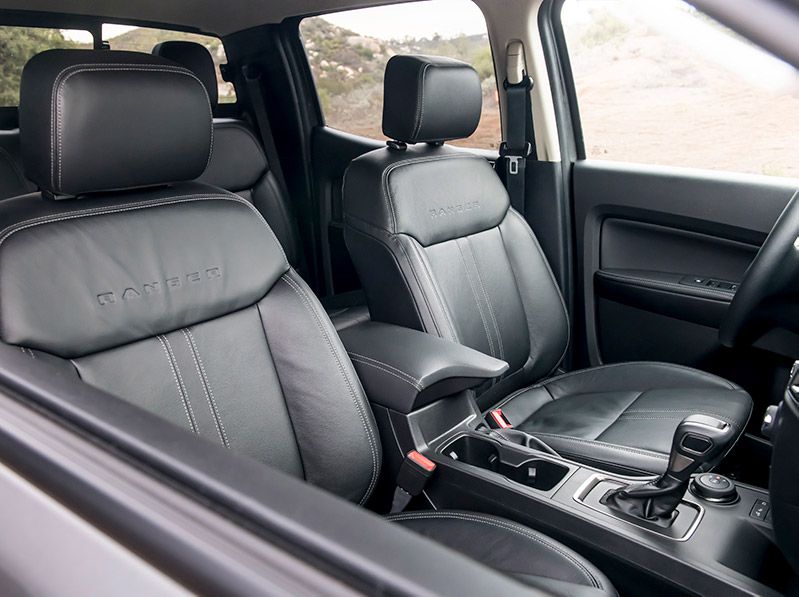
Photo by Ford
Simple Technology Packages
As with the rest of the Ranger, Ford has kept the technology choices simple. The XL trim comes with a 4.2-inch LCD dashboard screen equipped with an AM/FM radio and a USB port for your mobile device. The system also offers Sync Bluetooth connections to stream your music and make phone calls. A rearview camera is included. Both the XLT and Lariat trims use the Sync 3 infotainment system with an 8-inch touchscreen interface. Navigation is optional on the 8-inch system.
The Ford Co-Pilot 360 system is available as an option on XL trim, and it’s standard on the XLT and Lariat trims. This system includes advanced driver aids such as lane-keeping assist, automatic high beams, blind-spot monitoring with trailer coverage, a rear cross-traffic alert, and automatic emergency braking.
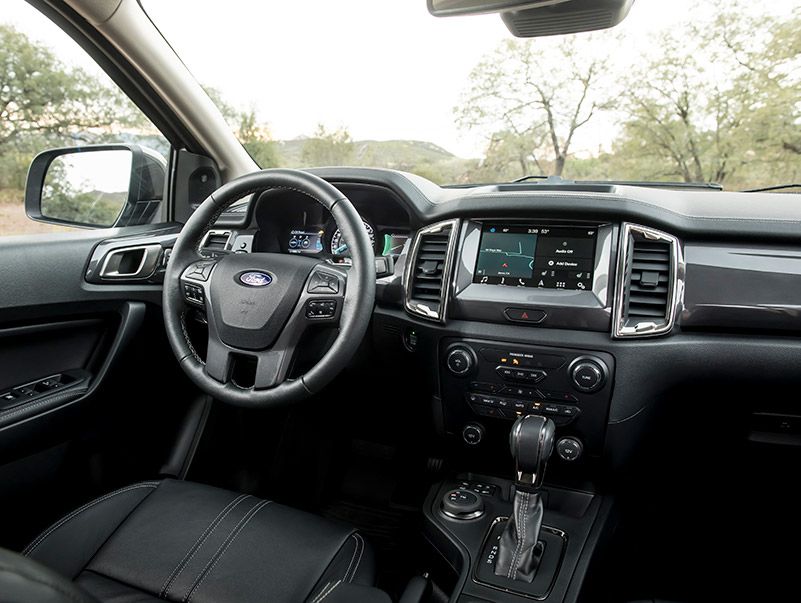
Photo by Ford
Bottom Line – A Competitive Truck
The mid-size pickup truck market is a tough competitive space, but Ford has played it smart with the Ranger. This pickup does not try to mimic the offerings from other automakers; it’s a completely different experience. That’s good news for consumers who want a real choice between distinct brands.
Some buyers will be hesitant to try a four-cylinder truck, but Ford’s EcoBoost engine is powerful enough to do any mid-size job. With best-in-class payload capacity and competitive towing ability with any of the V6-powered competitors, the Ranger makes a compelling case at an attractive price point. Fuel-conscious buyers will appreciate the Ranger’s economy with the EcoBoost engine. The bottom line is simple: If you’re shopping for a mid-size truck, Ford has a strong contender in the 2019 Ranger.
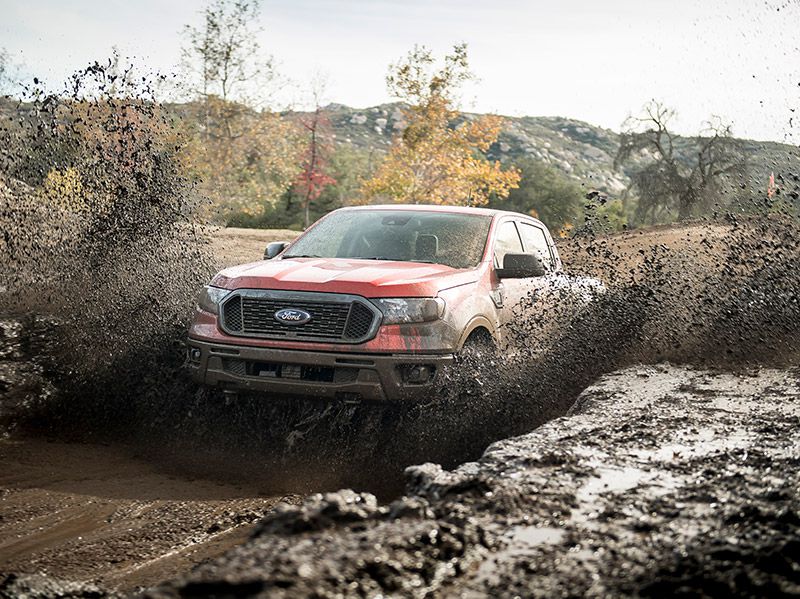
Photo by Ford